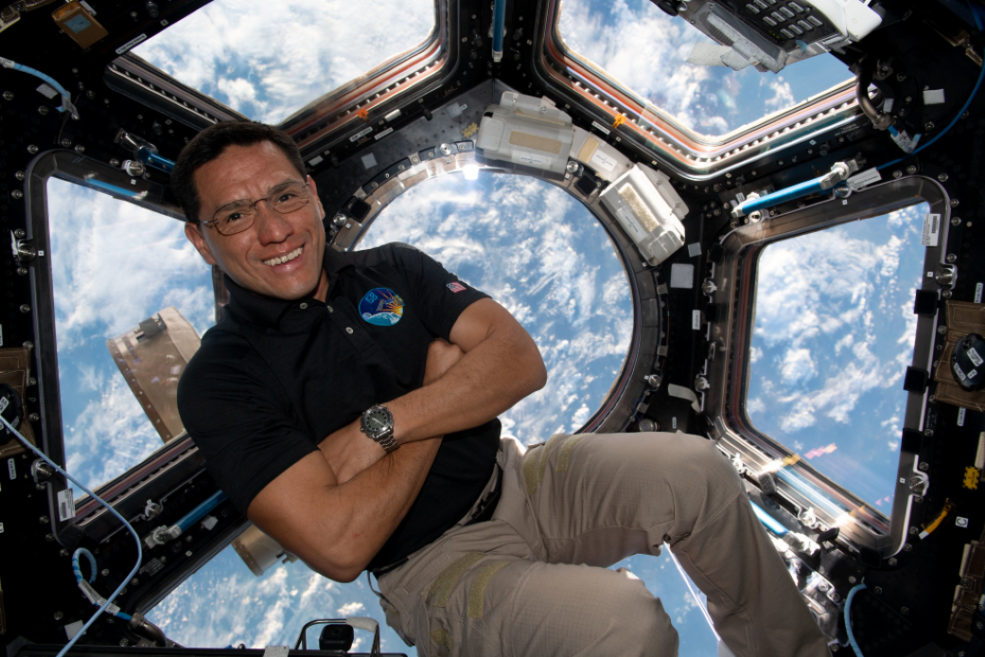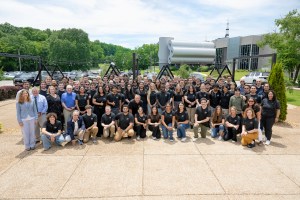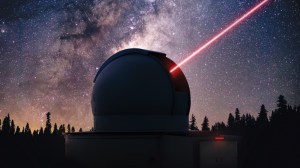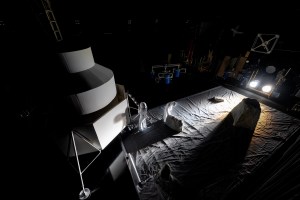NASA astronaut Frank Rubio contributed to several human health studies while living in space for more than a year during his record-breaking mission.
Lee esta historia en español aquí.
NASA astronaut Frank Rubio set a new record on Monday, Sept. 11 for the longest single spaceflight conducted by a U.S. astronaut.
Rubio arrived aboard the International Space Station on Sept. 21, 2022, and returned home on Wednesday, Sept. 27, after spending 371 days in low-Earth orbit. His mission breaks the previous record, held by NASA astronaut Mark Vande Hei, by 16 days. It also marks the first time a U.S. astronaut will have spent more than one year in space on a single mission.
Rubio originally was slated to spend six months in space before his mission was extended to more than a year. He will return in a Roscosmos Soyuz spacecraft with cosmonauts Sergey Prokopyev and Dmitri Petelin.
Throughout his record-breaking mission, Rubio contributed to several science experiments, including six studies geared toward understanding how spaceflight affects human physiology and psychology.
“Every day we spend up here, we know a little more about how the human body fares in space,” Rubio explained in a Sept 26. episode of the Spanish podcast Universo Curioso de la NASA. “We continue to do studies on the station that will help us when we continue exploring deeper and deeper into our solar system.”
Rubio is the first astronaut to participate in a study examining how exercising with limited gym equipment affects the human body. Recognizing that crew members traveling to the Moon and elsewhere will not have enough room in their spacecraft for a treadmill, researchers are eager to determine whether other exercise regimens could keep crews healthy on long missions. So rather than running on the space station’s treadmill, Rubio exercised only on the space station’s bicycle and weightlifting machine.
He is also one of a handful of astronauts to help researchers test whether an enhanced spaceflight diet can help humans better adapt to life in space. For this study, Rubio met with a specialist to create a customized diet loaded with nutrients, with an emphasis on foods such as fruits, vegetables, and fish. Scientists will evaluate whether consuming this diet boosted his immunity and improved how his gut microbe functioned.
For another experiment, Rubio helped nurture and monitor vegetables produced in the space station’s Vegetable Production System, or Veggie. Future deep space missions will require astronauts to grow fresh food in space as an alternative to prepackaged food. This Veggie study evaluates protocols for growing produce in space, and whether plants grown in microgravity can help satisfy the dietary needs of astronauts on more distant spaceflight missions.
Rubio also provided biological samples, completed surveys, and performed tests for a study collecting a core set of measurements from astronauts, called Spaceflight Standard Measures. The measurements serve as a baseline for how multiple systems in the body react to spaceflight, from human cognition to the immune system. Other biological samples will be frozen and archived for future life science studies.
After he returns, Rubio will provide researchers with feedback about any injuries like bruises that he may acquire due to the forces of landing in the Soyuz spacecraft. His feedback will provide insight into whether extended spaceflight missions make people more vulnerable to injuries. Such insight will be used to improve the design and landing systems of future spacecraft.
“Our understanding of how spaceflight affects the human body is mostly limited to astronauts on short-duration missions during the shuttle days and crew members on six-month missions aboard the space station,” said Steven H. Platts, chief scientist of NASA’s Human Research Program, which seeks to understand how the human body adapts to long-duration space missions. When needed, the program also develops strategies that prevent or treat potential spaceflight health problems. “Rubio’s contributions,” Platts noted, “provide valuable information that will be used to help keep astronauts as healthy as possible on increasingly longer missions to the Moon, Mars, and beyond.”
______
NASA’s Human Research Program, or HRP, pursues the best methods and technologies to support safe, productive human space travel. Through science conducted in laboratories, ground-based analogs, and the International Space Station, HRP scrutinizes how spaceflight affects human bodies and behaviors. Such research drives HRP’s quest to innovate ways that keep astronauts healthy and mission-ready as space travel expands to the Moon, Mars, and beyond.































